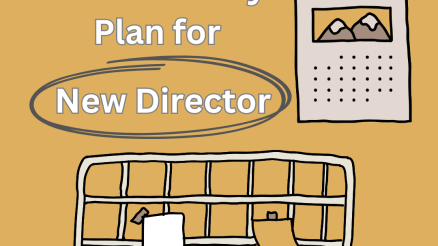Change is a constant in any organization, and managing change effectively is critical to ensuring its success.
A change management plan provides a structured and controlled approach to managing change, with the aim of minimizing disruption and maximizing benefits.
This plan is essential to ensure that changes are implemented smoothly and effectively, with minimal negative impact on the organization and its stakeholders.
In this blog post, we will explore the purpose of a change management plan, why it is important, and how to create one.
We will provide step-by-step guidance on developing a comprehensive change management plan, covering key components such as defining the change, outlining the change process, identifying stakeholders, and managing risks.
By the end of this post, you will have a better understanding of how to create a change management plan and the benefits it can bring to your organization.
What is change management plan?
A change management plan is an outline of tasks that serves as roadmap to implement organizational change. A good change management plan is a strategic tool which guides all the stakeholders during their journey of complex change.
It’s always hard to embrace change. Different people respond differently to change. Some might be excited about change and welcome new ways of working and others might resist and hesitant to accept change.
A well-thought-out change management plan comes in handy when people are uncertain about change and they want to know what will be big or small tasks and they also want to be clear on their new role and responsibilities.
What is the Purpose of change management plan
Many organisations, nowadays, make change management plan to implement change in an organised way.
The purpose of preparing a change management plan are to:
Providing clarity: Knowing process is crucial for successful implementation of change. And a good plan provides a clear picture which helps to understand entire change initiative. A change management plan clearly outlines what change is being made, including the scope of the change, the reasons for it, and the expected outcomes. This helps stakeholders to understand the purpose of the change and what is expected of them.
Defining the roles and responsibilities: The plan also defines the roles and responsibilities of those involved in the change process, including who will be responsible for requesting, reviewing, approving, implementing, and monitoring the change. This clarity helps to avoid confusion and ensures that everyone knows what they are responsible for.
Defining the timeline: The plan also includes a timeline for the change, including key milestones and deadlines. This clarity helps stakeholders to understand when the change will take place and what they need to do to prepare for it.
Defining the risks and mitigation strategies: The plan also identifies potential risks associated with the change and outlines mitigation strategies to address these risks. This clarity helps stakeholders to understand the potential impact of the change and what is being done to mitigate any negative effects.
Providing framework for communication and engagement: A change management plan can help to ensure that stakeholders are informed and engaged throughout the change process. The plan can outline the communication channels that will be used to inform stakeholders about the change, as well as the messages that will be communicated at each stage. It can also identify key stakeholders and define how they will be involved in the change process, such as through training or consultation.
Tracking progress: It serves as a useful tool for tracking progress on change initiative. With the help of this plan, change managers can identify what milestones are achieved and where they lag behind and what corrective actions, they need to complete tasks.
Steps to create change management plan
Developing a change management plan requires a strategic thinking and inputs from all stakeholders. All of those who are responsible in implementing change must be involved at each step of preparing this plan.
There are seven logical steps for developing a change management plan:
1. Know your Goals
The first step to prepare change management plan is to define goals of organizational change. Change leaders must know answers of all key questions i.e why change is required and what they need to change and what resources and time it would take to implement this kind of change.
Goals should be SMART: Specific, Measurable, Attainable, Realistic and Timebound. Change leaders need to be very clear on goals so that everyone knows what is the target. They must agree upon some Key Performance Indicators (KPIs) to measure results of their goals. Another attribute of goals is that these are attainable and not too ambitious to achieve. Goals must be achieved in certain period of time.
2. Take stock of Human Resource
Great initiatives need great teamwork. It’s human resource and team members which carry out implementation of change process. If an organization has right persons for right job and have skilled team then it has more chance of success.
Change leaders must identify their team before kicking off change initiative. At the time of preparing change management plan, they need to just assign tasks and fix roles and responsibilities to their team members.
3. Develop a checklist of tasks
The next logical step after defining goals and setting up team is to start developing the plan itself. One way of doing this is to create checklists of all the possible activities and tasks. To make a comprehensive list of tasks, always breakdown big activities and tasks into the next small step or follow up action.
It’s good to include everything what team has discussed and seek feedback from employees and other stakeholders to give their feedback.
4. Set timeline
A good plan always spells outs timeline or deadline for each of tasks. Every team member should know when each of activity will take place and when entire process will be ended.
Before setting these timelines, change leaders must discuss tasks and activities with their team and finalize timelines with consensus. The buy-in of team is essential to meet deadlines.
Employees generally underestimate how much time is required to complete certain tasks. Many a times they are optimistic about completing their task and they propose unrealistic timelines. For setting more realistic timelines, employees and managers need to carefully analyze tasks and share their candid thoughts.
5. Know risks and develop contingency plan
It’s always good to know every risk involved in execution of change. There can be emergencies and accidents, political and financial crisis or technological failures. These risks which are specific to change management need to be identified through speaking to all stakeholders and team members.
After this, possible solutions should be agreed upon to manage situation if risks become reality. A contingency plan should be part of change management plan so that everyone knows what to do next when there is a crisis or things don’t go as planned.
6. Communicate
The next step is to clearly communicate your change management plan with the team and all other stakeholders. For this purpose, it is important to decide what communication channel will be used.
This plan is usually in form of a document so a dedicated meeting and follow up through email is used to communicate the plan and have feedback from all the stakeholders. However other channels can also be used depending upon the organizational need and culture.
7. Execute
Once you have created your well-thought-out plan, assembled your team, and put every detail in your change management plan then it’s time to put it into action. For this purpose, you must ensure training and education from the start and maintain it throughout the process.
Create a decision-making procedure: Outline a procedure for dealing with any issues that may develop so that employees are empowered and know what to do.
Build trust in the change process by celebrating achievements and wins as well as announcing extra rewards and incentives for successful implementation.
Take Home Points:
- Change management plan is like a roadmap which tells what and when certain tasks will be completed and who will be responsible to carry out these tasks.
- A good plan gives clarity, enhance productivity, reduce resistance and helps to track progress on change project.
- The first step to develop this plan is to define goals as what organization wants to achieve and why.
- The second step is to line up human resource who will be involved in implementation of change.
- The third step is to develop checklist of all possible tasks and activities and further breakdown of these.
- The fourth step is to set realistic timeline to achieve each of big or small tasks.
- The fifth step is identify risks and contingency plans to mitigate these risks.
- The sixth steep is to communicate the plan to all relevant stakeholders.
- The seventh step is to execute the plan with full commitment and determination.



